Did you Damage Your Grass with Herbicide? How to Know & What to Do
When it comes to weeds, it’s easy to go into full-blown attack mode.
You hate weeds. You really want them dead. You attack with weed killer. You feel powerful.
Then, uh oh. Maybe you went overboard.
Did you use too much weed killer on your lawn? What are the signs?
How to revive grass after too much weed killer?
Dillon Beardall, head of fertilizer operations at Lawn Buddies, walks us through it.
Herbicide Damage to Grass: The Big Mistake
There you are on Saturday morning, hanging out in the weed killer aisle at the home improvement store. (It’s where all the cool people hang out, right?)
So you buy a jug of Roundup weed killer and start spraying the weeds in your lawn.
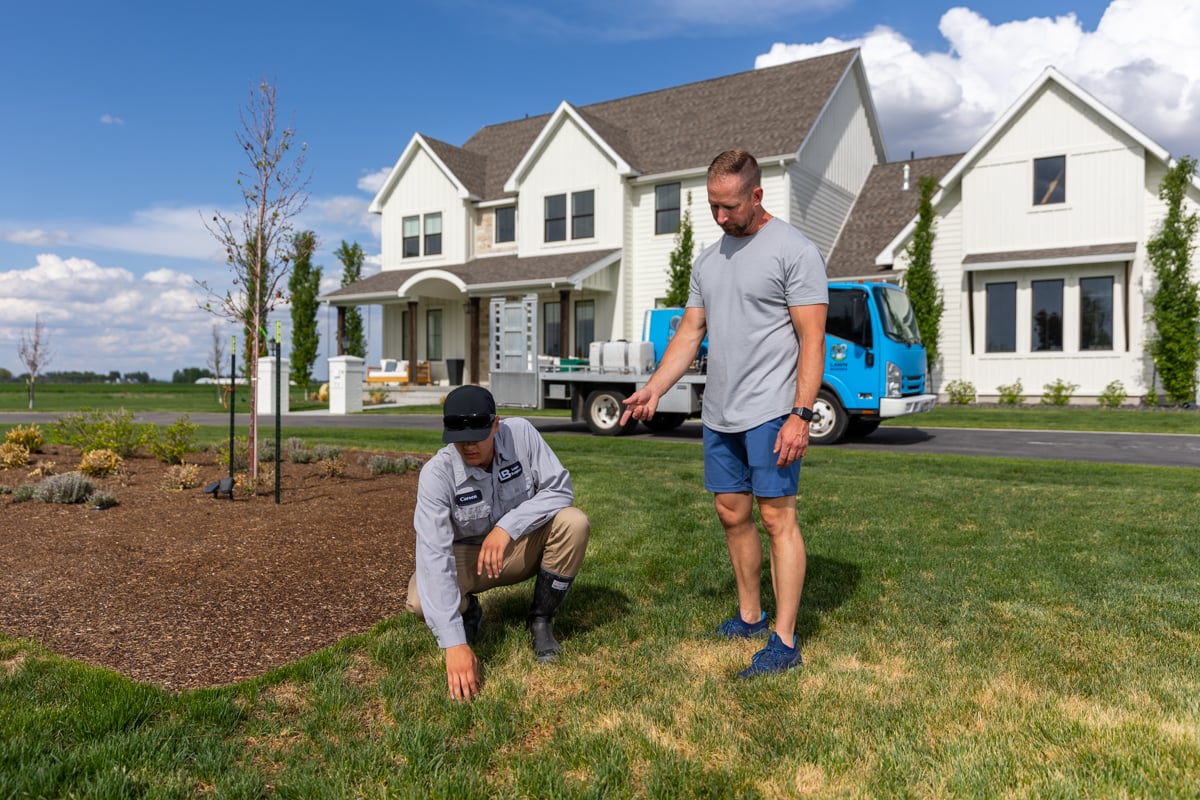
Big mistake — and the most common mistake weed-killing homeowners make, Beardall says.
Roundup is non-selective weed control, which means it kills everything it touches. Not just weeds.
Bye, grass. You’ll see big brown circles of dead grass wherever you sprayed.

Another “weed killer killed my grass” scenario?
”Or, they’ll forget what product was in their sprayer and just go use that on the lawn,” he says. Turns out it was filled with a non-selective herbicide containing glyphosate and it killed everything.
How Do You Know If You Put Too Much Weed Killer on Your Lawn?
Suddenly see a bunch of brown after a weed killing session?
Oops.
“If they broadcast spray their lawn with too much herbicide, it will generally just turn it brown really quickly,” Beardall says. “It can be confused with insect damage, but the pattern of the dead grass is what will typically set it apart from insect damage.”
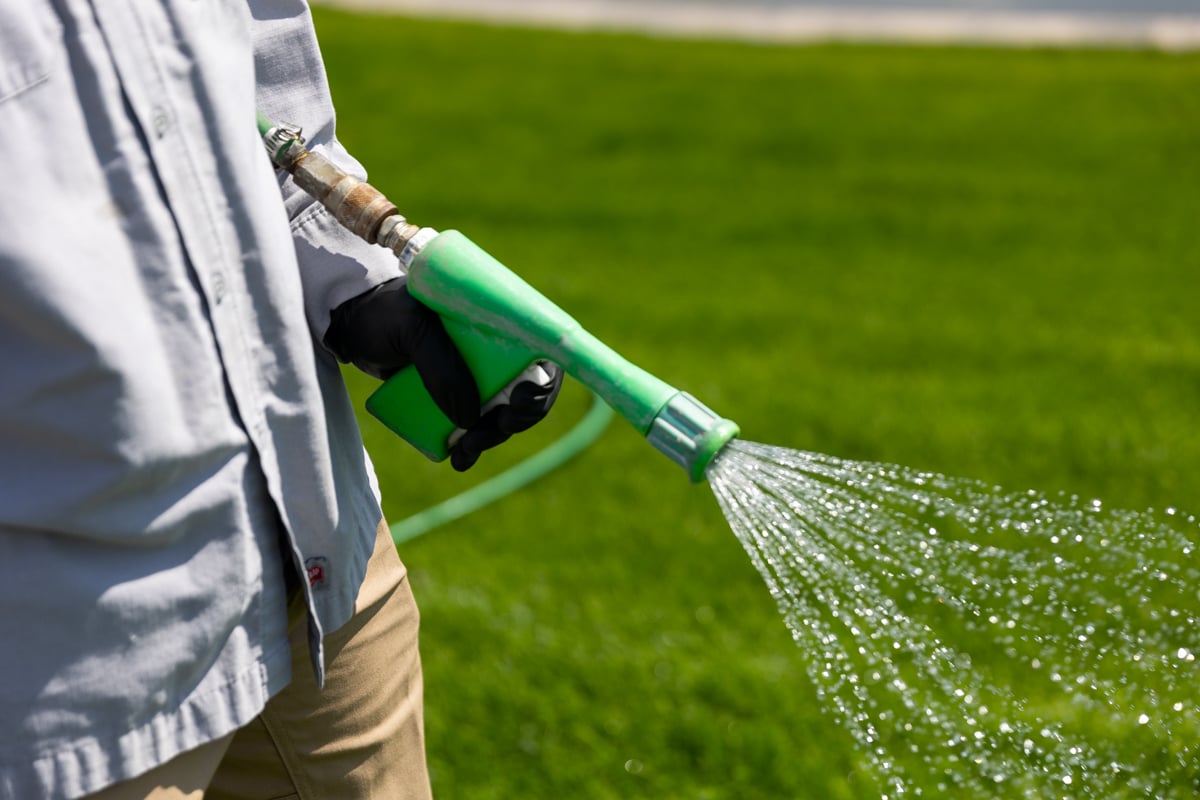
What’s he mean by that?
If you spot treated your lawn for weeds, the dead areas will just be isolated around the weeds. If you treated the whole lawn, then the whole lawn goes brown and the herbicide damage to grass “is pretty obvious,” he says.
Super Important: Know the Difference Between Selective and Non-Selective Herbicide
You’ll spare yourself a lot of grief if you remember the key difference.
Non-selective herbicides will kill everything they come in contact with — weeds, grass, flowers, plants.
Selective herbicides are designed to selectively control certain weeds. They won’t kill your grass.
Also, be sure to follow the label to avoid putting too much weed killer on your lawn, Beardall says.
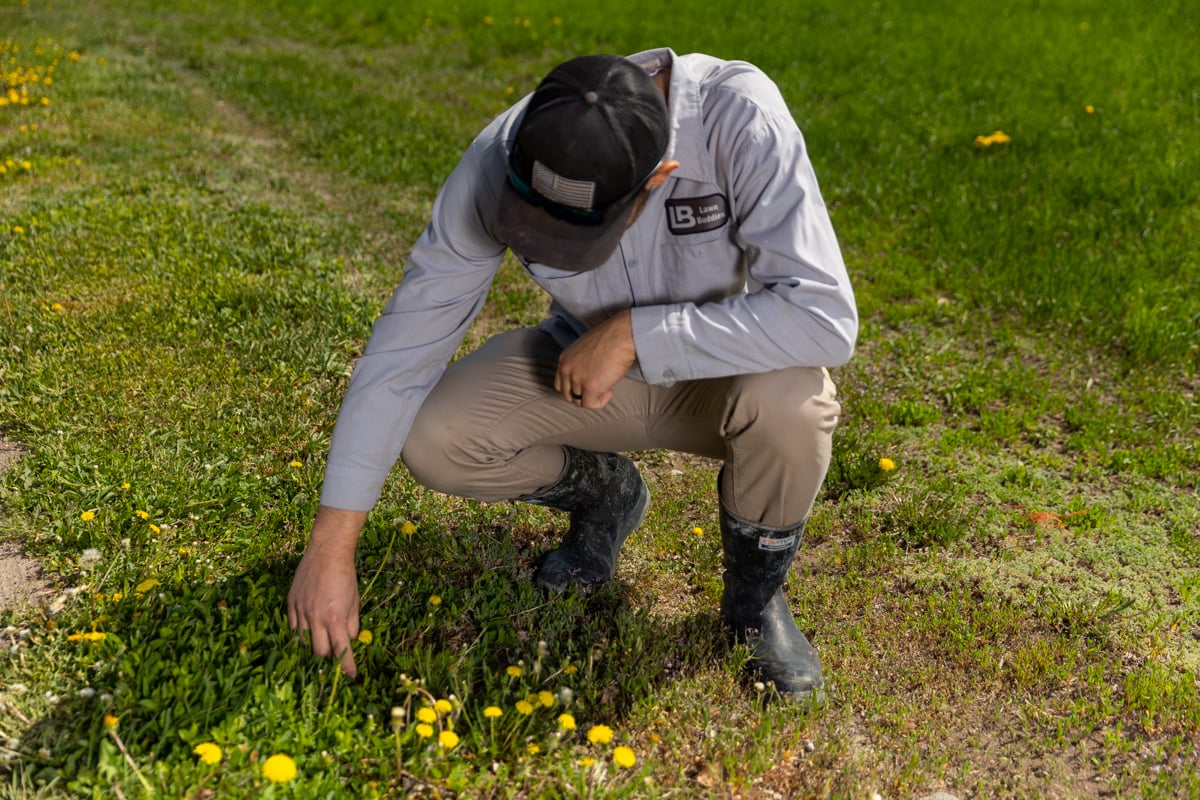
“Most homeowners don't use any type of measuring device when putting product into their sprayer,” he says. “They use the ‘glug method.’ They think that three ‘glugs’ is good per gallon of water or per sprayer.”
Actually, many products only require 1-2 ounces per gallon of water, he says. Yikes. That’s not three glugs.
“So, it ends up costing them a lot more in product as well because they don't measure right,” he says. Always read the label.
Here’s a Good Tip: Use Separate Sprayers
“If a homeowner is going to do herbicide treatments on their own, it's wise to have separate sprayers,” Beardall says. “One for spraying weeds in the driveway and flower beds, and then one that‘s only used for the lawn that won't harm grass.
“And mark them so that they don't forget which one is used where.”
How to Revive Grass After Weed Killer
First, try water.
“The best thing to do is to water a lot to try and dilute that product as much as possible and help make its way through the plant,” Beardall says. Sometimes, the lawn will recover, he says, but if it's really bad, you’ll need to re-seed.
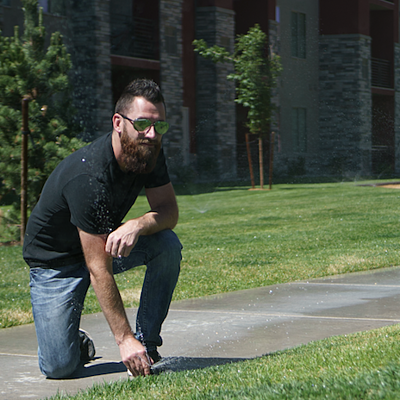
“Some herbicides have a reseeding interval of several weeks,” he says, “so it's important to check the label before just throwing down seed after this type of incident.”
Better Yet, Leave Weed Control to the Pros
“Weed killer killed my grass!” Avoid that sad statement by hiring professional weed control.
Why deal with the hassles of weed control — including keeping track of selective vs non-selective and figuring out the right amounts — when you can hand the whole pesky task over to the pros?
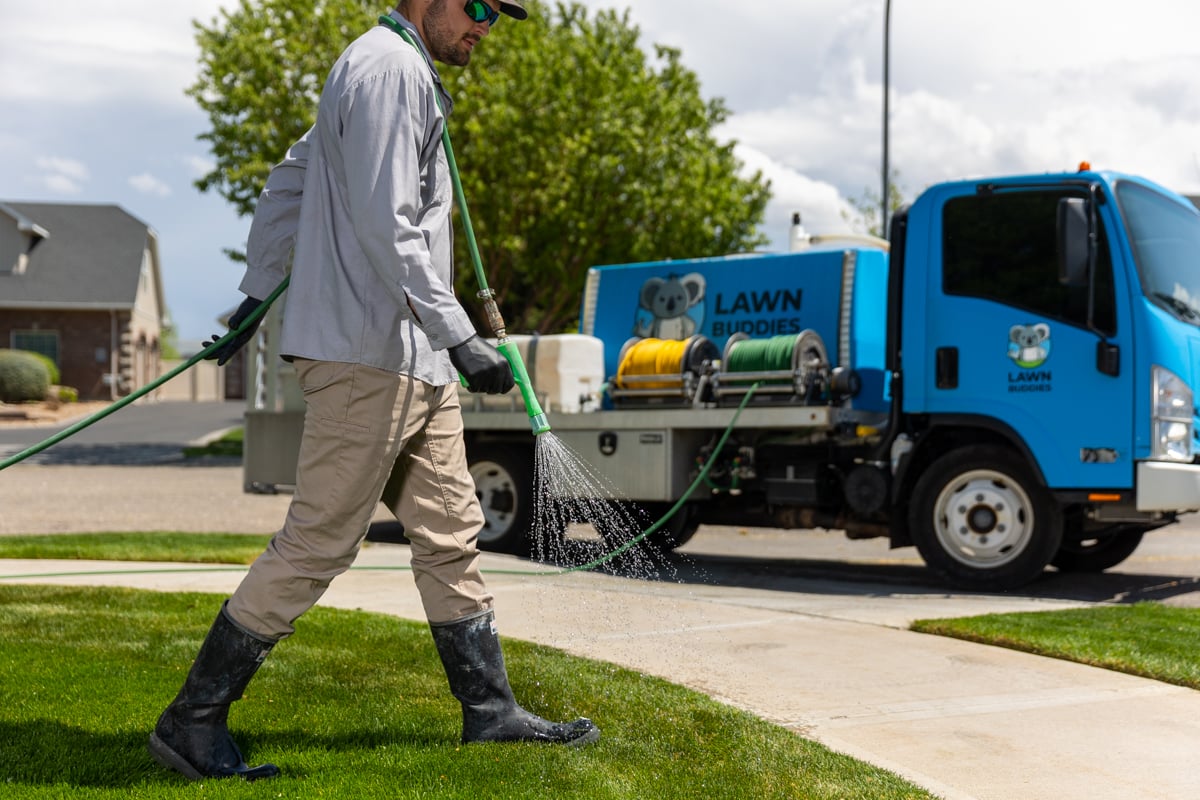
Professionals have access to weed control products you can’t use without a license. And they can custom mix products or mix them in higher concentrations than the pre-mixed products homeowners can buy at the store. Even better: they know the precise amounts to use without damaging your lawn.
It’s one great reason to hire an Idaho lawn care service. Another reason: you don’t have to worry about buying and storing chemicals in your garage.
When you choose Lawn Buddies in Idaho Falls and Boise, you get one premium, six-visit lawn care program that includes everything your lawn needs to grow healthy and green, including weed control that’s perfectly timed throughout the year.
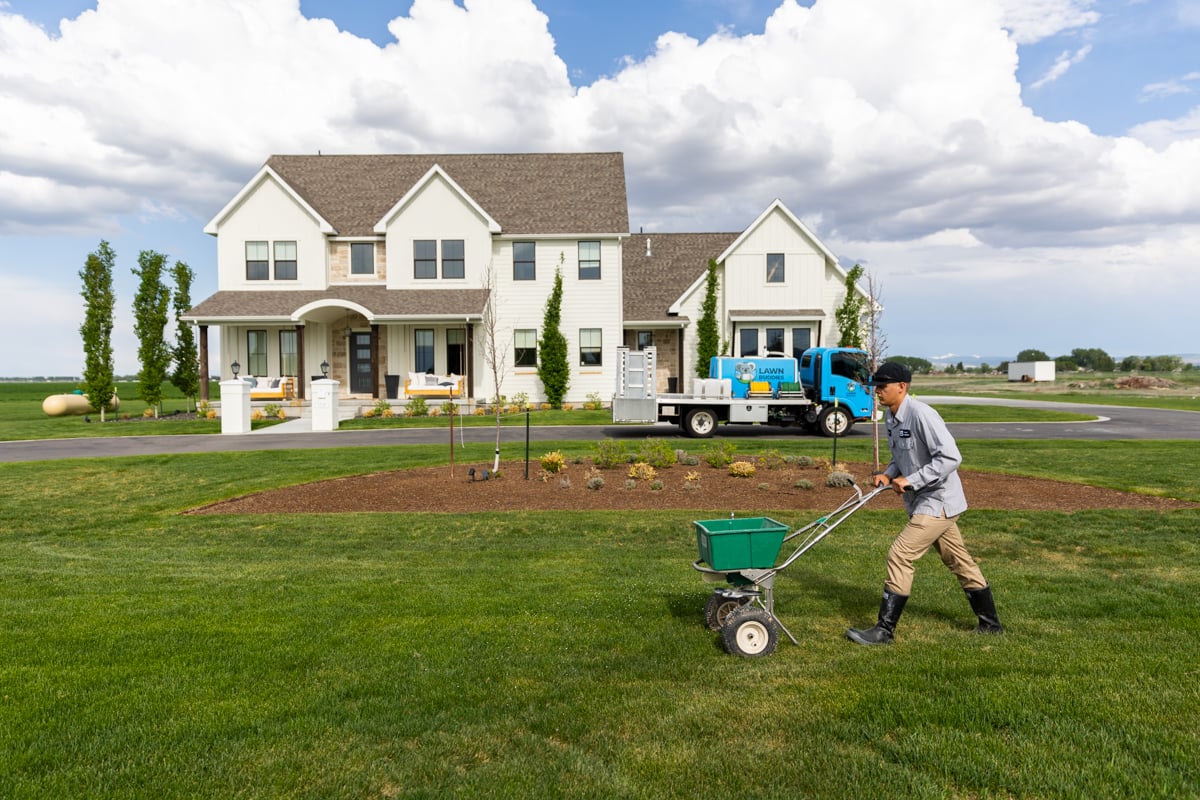
Most weeds are banished over the course of the six-step program.
But some extra-tough weeds like thistle, field bindweed, and black medic often require a different herbicide, which is an additional visit on top of the normal lawn treatment.
Controlling weeds is a process, not a one-shot deal.
Help Prevent Weeds with a Healthy Lawn
The best method of control for weeds is establishing healthy turf, including proper fertilizing, watering, and mowing.
Weeds hate a thick, healthy lawn. Dense grass crowds out weeds and blocks the sunlight their seeds need to sprout.
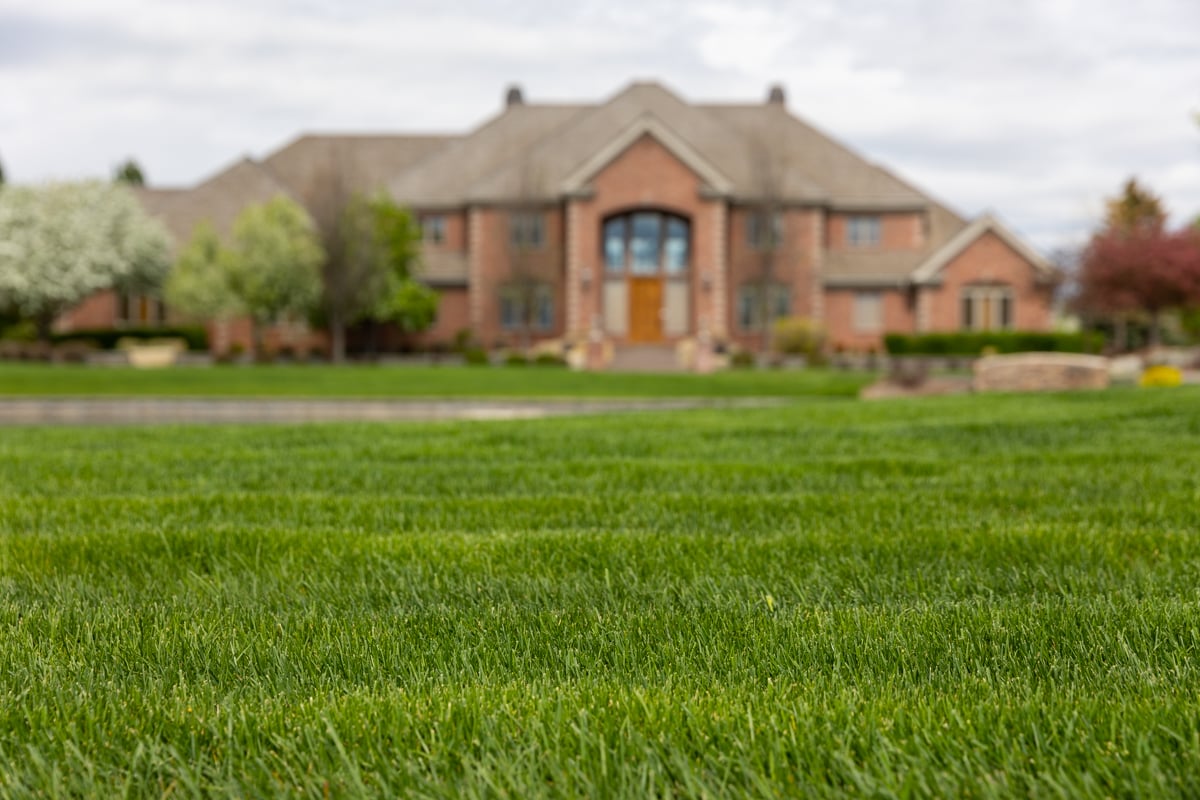
Weeds love to push through struggling lawns to take over weak spots. So your best line of defense is to keep your grass thick, lush and healthy with a lawn care service annual maintenance program for healthy, strong roots.
Then weed seeds will have a tougher time sprouting.
Is Your Lawn Ready for a New Best Friend?
Stop worrying about weeds and partner with an Idaho lawn care company that’s expert in weed control.
Choose a professional lawn care service in the Idaho Falls or Boise, ID area that bundles your yard’s most-needed treatments into one convenient, no-fuss plan that tells you the cost up front.
Welcome to one premium, six-visit lawn care program that includes everything your Idaho lawn needs to grow healthy and green.
Fertilizer, weed treatments, and grub control, all wrapped up in six visits, each perfectly timed throughout the season, so your grass is green and strong and resists weeds.
We’ve got your back.
Got a few minutes? That’s all you need to get started.
Fill out the form on this page.
Call us at (208) 656-9131.
Or read more about our services.
Then kick back and relax in your healthy, thriving yard.



